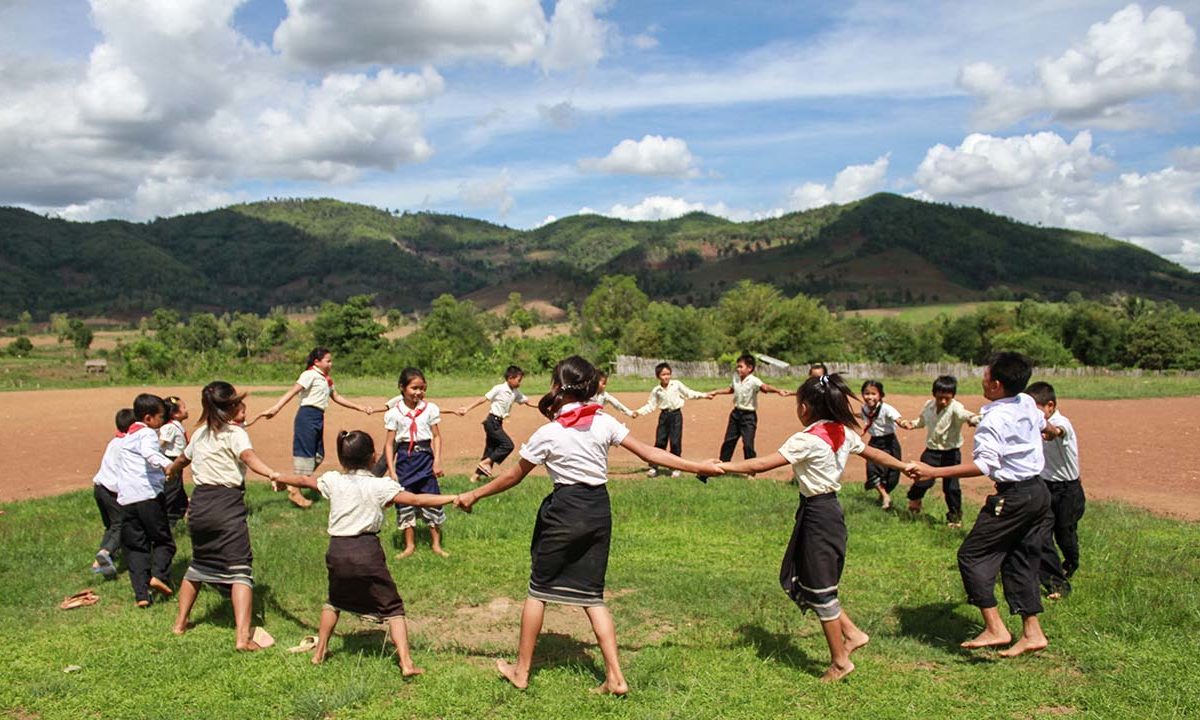
CC-BY Xaykhame Manilasit / Asian Development Bank
The Global Goals – the most ambitious plan for our planet
It is the most ambitious plan for the future. At the UN's general assembly in September 2015 all leaders of the World adopted the Global Goals.
The 17 Global Goals consists of 169 targets. They aim to solve the major problems of our world by 2030. We must eradicate extreme poverty and hunger, reduce inequalities, and combat climate changes. We must be able to live a prosperous life and make sure that our planet is in great shape for future generations. With the Global Goals the UN has set sail on a more sustainable future for everyone on the planet – that is a bigger challenge than it was to put a man on the moon.
SDGs, Global Goals or Agenda 2030?
The Global Goals go by several names. This short guide will clean up the confusion:
The most popular name is Global Goals, but the official term is ’Transforming our World: The 2030 Agenda for Sustainable Development’.
Sustainable Development Goals is often used in abbreviated as SDGs, but we like the term Global Goals the most, as we find it easier to understand and communicate.
193 world leaders have now commited to 17 Global Goals. It replaces the Millennium Development Goals.
The Global Goals are the most ambitious plan in human history. We can be the first generation to end extreme poverty, to fight inequality & injustice and the last generation to be threatened by climate change.
The Global Goals will – as the Millennium Development Goals – affect millions of people. Citizens of the world now have a shared responsibility to produce, consume and act differently so that we can give our earth to the next generation.
The Global Goals is about all of us
The Global Goals are not a first attempt for UN to set targets for the global development. Back in 2000 all world leaders agreed on working towards a better world. They adopted eight specific goals on what the should look like by 2015. By 2015 extreme poverty should be halved, every child to go to school, rights should be protected, deadly diseases halted, and much more.
These predecessors for the Global Goals were called the Millenium Development Goals. By their inauguration they were met with great scepticism, but the agreement was a milestone in ending global poverty. Not all of the Millenium Development Goals were met, but great progress was achieved on most targets. Since 1990 people living in extreme poverty is down by 68 percent, there is gender parity on how many children start in school, the number of global HIV-infections is decreased by 40 percent, and the number of malaria deaths is decreased by 58 percent.
The goals, that were not met, saw substantial progress.
The previous Millenium Development Goals focused on developing countries, but the Global Goals is about the whole world. Everybody must take a responsibility and change their way of living for a more sustainable future. As their predecessors the new Global Goals will change the life of billions of people. The aim is to erradicate rather than reduce poverty, hunger, and deadly diseases.
New solutions needed
First thing is to agree on major objectives, next step is to make them real. In order to achieve these Global Goals, everybody needs to know about them. That is why World’s Best News has a mission about making the Global Goals famous and know to as many as possible. The more people who know the goals, the more people can demand action and results from our political leaders. And the more people who know about the massive gains we already have achieved, and this new ambitious plan for the world, the more people will do theirs to achieve the Global Goals.
We need new solutions, massive investment, and partnerships across sectors to make the Global Goals a reality. No politician, government, business, or organisation can do it on their own. That is why World’s Best News is founded as collaboration between the UN, the danish NGOs and businesses, and work with international partners.
The Global Goals can only be achieved, if we work together.